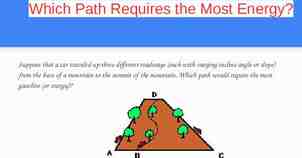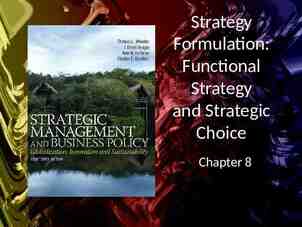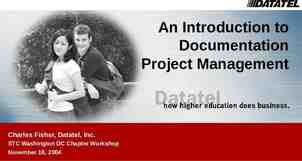MapReduce 6.830, May 5 Mike Cafarella
52 Slides1.82 MB

MapReduce 6.830, May 5 Mike Cafarella

Processing Large Data Let’s distribute load over many machines 1000s, not 2-16 as in traditional distributed databases Programmer cannot know how many machines at program-time or runtime Even so, job is very long-lasting compared to most db queries Machines die, machines depart; job must survive 2

MapReduce MapReduce system provides: Automatic parallelization & distribution Fault-tolerance Status and monitoring tools Clean abstraction for programmers 3

Data-Centric Programming MapReduce has become very popular, for lots of good reasons Easy to write distributed programs Built-in reliability on large clusters Bytestreams, not relations “Schema-later”, or “schema-never” Your choice of programming languages Hadoop relatively easy to administer Should you use MapReduce instead of a database? This was very popular in late-2000s. Today, less so 4

A Story About MapReduce Imagine some fictional comedy sorority or fraternity has instituted a new “entrance” ritual. A student must compute: How common are 1-character words? (‘a’, ‘I’, etc.) How common are 2-character words? (‘an’, ‘be’, ‘is’, etc.) up to 10-character words . IN THE ENTIRE MIT LIBRARY 5

A Story About MapReduce A few (real) statistics 6M volumes in the MIT library You have one semester You can recruit 1,000 students to help In the end, we’ll have 10 numbers: Count of one-character words Count of two-character words etc. until 10 6

A Story About MapReduce The next day near Stata: Divide the students into groups The Mappers Thousands of people The Grouper Just one person for now (in the real MapReduce system, the story is more complicated) The Reducers Around 10 The Controller You 7

A Story About MapReduce Each mapper student gets a “reading list” of 6,000 books (welcome to college!) That’s 6M books / 1k first-year students And a notepad Instructions: write one line for each word you see in your reading list, along with the number of characters 2, It 3, was 3, the etc. many many many times 8

A Story About MapReduce After the mappers are done, they hand their notebooks to the grouper The grouper has a 10 page notebook The grouper takes the mappers’ notebooks and writes every 1-letter word on page 1, 2-letter word on page 2, etc. Sheet 1: a, a, a, I, a, many more Sheet 2: if, if, an, if, at . many more . Sheet 10: schnozzles, mozzarella, etc. 9

A Story About MapReduce Now, each of the 10 sheets goes to a reducer Each reducer counts the number of words on one sheet, and writes the number in bold letters on the back Remember, Sheet 2 has: if, of, it, of, of, if, at, im, is, is, of, of The reducer writes 2453838307534 on the back 10

A Story About MapReduce Now, the controller collects the 10 sheets and reads the back of each sheet, which is the number of 1character words, 2-character words, etc. And you’re done! 11

A Story About MapReduce A few observations The Mappers can work independently The Reducers can work independently The Grouper has a lot of work (collating and writing down each individual word on a sheet!) but didn’t have to do any counting (“real work”) All Grouper had to do was to look at the Mappers’ outputs and put that word on the appropriate sheet 12

A Story About MapReduce Ideas for optimizations? How could you reduce the amount paper used by the mappers? 13

A Story About MapReduce Ideas for optimizations? TAKE 60 SECONDS TO PUT THEM IN THE CHAT! What steps CAN’T be optimized easily? TAKE ANOTHER 60 SECONDS 14

From Story to MapReduce Library The work of the Controller (dividing the work) and the Grouper (Grouping the values by key), remains the same MapReduce library provides these Grouping is sometimes called ”sort” or “shuffle” The work of the mappers and reducers differs with problem This is what you write 15

Programming Model The computation: Input key/value pairs e.g., (book title, book content) Output different key/value pairs e.g., (word length, occurrences) The user of the MapReduce library expresses the computation as two functions . CAN YOU GUESS THEIR NAMES? Map and Reduce 16

Map function User's map function takes an input pair and produces a set of intermediate key/value pairs map(book title, book content): words book content.split() for word in words: word length len(word) EmitIntermediate(word length, 1) The MapReduce library groups together all intermediate values associated with the same intermediate key and passes them to the Reduce function 17

Reduce function User's reduce function accepts an intermediate key and a list of values for that key. It merges together these values to form a possibly smaller set of values. reduce(word length, list of occurrences): sum 0 for i in list of occurrences: sum i Emit(sum) 18

Example input01.txt Hello World Bye World input02.txt Hello Hadoop Goodbye Hadoop Task: count the number of words with 1 character, 2 characters, etc. (same as before) Spend 2 minutes and think about: What are the inputs to the map steps? What are the outputs of the map steps? What are the inputs to the reduce steps? What are the outputs of the reduce steps? 19

Example What are the inputs to the map steps? Segments of the inputs For example, First call to map: "input01.txt", "Hello World Bye World" Second call to map: "input02.txt", "Hello Hadoop Goodbye Hadoop" 20

Example input01.txt Hello World Bye World input02.txt Hello Hadoop Goodbye Hadoop What are the outputs of the map steps? NOTE: order doesn't matter 5 5 3 5 5 6 7 6 1 1 1 1 1 1 1 1 21

Example input01.txt Hello World Bye World input02.txt Hello Hadoop Goodbye Hadoop What are the inputs to the reduce steps? Prior to reduce(), MapReduce groups together the map() outputs like keys 3 1 -----5 1 5 1 5 1 5 1 -----6 1 6 1 -----7 1 22

Example input01.txt Hello World Bye World input02.txt Hello Hadoop Goodbye Hadoop What are the outputs of the reduce steps? word length, occurrences 3 5 6 7 1 4 2 1 23

Types Map and reduce have related types map (k1, v1) list(k2, v2) reduce (k2, list(v2)) list(v2) Final output list can be: Smaller than input list (in the case of computing summary statistics, like word count) Larger than input list (in the case of computing some kind of data structure for downstream use) Typically, just zero or one output value is produced per reduce invocation 24

Exercise: Word Count Count the number of occurrences of each word in a collection of web documents, identified by URL Exercise: write a map function and a reduce function 25

Exercise: Word Count Count the number of occurrences of each word in a collection of web documents, identified by URL map(url, content): for word in content: EmitIntermediate(word, 1); reduce(word, occurrences): Emit(sum(occurrences)) 26

map(url, content): for word in content: EmitIntermediate(word, 1); Exercise: Word Count Inputs to map Outputs of map input01.txt Hello World Bye World input02.txt Hello Hadoop Goodbye Hadoop Hello 1 World 1 Bye World 1 Hello 1 Hadoop Goodbye Hadoop 1 1 1 1 27

reduce(word, occurrences): Emit(sum(occurrences)) Exercise: Word Count Inputs to reduce (grouped by MR) Bye 1 ---------Goodbye 1 ---------Hadoop 1 Hadoop 1 ---------Hello 1 Hello 1 ---------World 1 World 1 Outputs of reduce Bye Goodbye Hadoop Hello 2 World 2 1 1 2 What if the number of unique words is small compared to the number of documents? Can you 28

Exercise: Word Count Another solution: sum the words within each doc map(url, content): for word in content: if word in counts hash: counts hash[word] 1 else: counts hash[word] 1 occurrences counts hash.items() #to list EmitIntermediate(occurrences); #list of (k,v) reduce(word, occurrences): Emit(sum(occurrences)) 29

input01.txt Hello World Bye World input02.txt Hello Hadoop Goodbye Hadoop Exercise: Word Count Output of map Output of reduce Hello 1 World 2 Bye Hello 1 Hadoop Goodbye Bye Goodbye Hadoop Hello 2 World 2 1 2 1 1 1 2 (same answer as before) We’re summing at doc-level (in map()) and corpus-level (in reduce()). What if we want to find the average # of occurrences for each word? What about median? 30

At-Home Exercises (take 10 mins) Write mapper and reducer functions for computing the dot product of two large vectors Assume we have prepared A and B for you: (1,(Ai,Bi)) Write mapper and reducer functions for distributed search (AKA grep) Print any line of a big input file that contains an input pattern as a substring See you in 10 minutes! 31

Dot product Write mapper and reducer functions for computing the dot product of two large vectors map(1, (ai, bi)): product ai * bi EmitIntermediate(1, product) reduce(1, product list): Emit(1, sum(product list)) 32

Linear search (grep) Write mapper and reducer functions for distributed search (AKA grep) Print any line of a big input file that contains an input pattern as a substring map(filename, content): for line in content: if pattern in line: EmitIntermediate(1, line) reduce(1, lines): for line in lines: Emit(1, line) 33

MapReduce vs the RDBMS Schemas: MR doesn’t have them, for better and worse Functions: MR doesn’t have a query language, but permits flexible UDFs Execution and optimization: MR has optimizations, but limited schemas mean limited options Failure recovery: MR can lose machines and keep going. Distributed RDBMS traditionally restarts queries Transactions: MR always yields new data. It never modifies data in place. Unclear semantics if the input data changes during processing. 34

Executing MapReduce MapReduce execution consists of 3 main stages: Map Shuffle/Sort (aka Group) Reduce In stage 1, partition input data and run map() on many machines Then group intermediate data by intermediate key In stage 2, partition intermediate data by key and run reduce() on many machines Output is whatever reduce() emits 35

36

37

Shuffle/Sort What happens between map & reduce? Data collated and grouped for map Default: hash(key)%R This step is similar to the RDBMS shuffle join What’s the join key? The intermediate mapper output key Execution goes as follows: Break input into M chunks Process each chunk w/ map process Group-by map output keys Place key-groups into R chunks Process each chunk w/ reduce process reduce fn’s outputs go to disk 38

Architecture 39

Job Processing Worker 0 Worker 1 Worker 2 Controller Worker 3 “grep” Worker 4 Worker 5 1. Client submits “grep” job, indicating code and input files 40

Job Processing Worker 0 Worker 1 Worker 2 Controller Worker 3 Worker 4 Worker 5 1. Client submits “grep” job, indicating code and input files 2. Controller breaks input file into k chunks, (in this case 6). Assigns work to workers. 41

Job Processing Worker 0 Worker 1 Worker 2 Controller Worker 3 Worker 4 Worker 5 1. Client submits “grep” job, indicating code and input files 2. Controller breaks input file into k chunks, (in this case 6). Assigns work to workers. 3. After map(), workers exchange mapoutput to build reduce() keyspace 42

Job Processing Worker 0 Worker 1 Worker 2 Controller Worker 3 Worker 4 Worker 5 1. Client submits “grep” job, indicating code and input files 2. Controller breaks input file into k chunks, (in this case 6). Assigns work to workers. 3. After map(), workers exchange mapoutput to build reduce() keyspace 4. Controller breaks reduce() keyspace 43 into m chunks (in this case 6). Assigns

Job Processing Worker 0 Worker 1 Worker 2 Controller Worker 3 Worker 4 Worker 5 1. Client submits “grep” job, indicating code and input files 2. Controller breaks input file into k chunks, (in this case 6). Assigns work to workers. 3. After map(), workers exchange mapoutput to build reduce() keyspace 4. Controller breaks reduce() keyspace 44 into m chunks (in this case 6). Assigns

Applications What else can be a MapReduce program? URL counting in logs Inverted index construction for search engines, Sorting Massive image conversion, others 45

Robustness How do we know if a machine goes down? Heartbeat messages tell master which machines are online What happens to the job with MapReduce? What happens without MapReduce? (say, in an RDBMS) 46

Robustness What happens when a machine dies? With MapReduce If a map() worker dies Just restart that task on a different box You lose the map() work, but no big deal If a reduce() worker ides Restart the reducer, using output from source mappers 47

Robustness What happens when a machine dies? Without MapReduce, in a traditional RDBMS Query is restarted Not so hot if your job is in hour 23 Recovery in the face of partial failure is maybe MapReduce’s most important contribution 48

A few nice features What about slow, not dead, machines? Speculative execution for stragglers Kill the 2nd-place finisher What about data placement? Spread input files across cluster disks; start tasks where the target data already lies Isn’t the intermediate data size large? Use a “local reducer” called a Combiner at each map Compress data between map and reduce 49

Key observations Scalability and fault-tolerance achieved by optimizing the execution engine once Use it many times by writing different map and reduce functions for different applications Stateless mapper Stateless reducer 50

Key observations Map and reduce functions inspired by functions of the same name in Lisp programming language Functional programming Computation as the evaluation of mathematical functions Functions have no side effects AKA "pure" functions AKA stateless Does not change state outside itself Easy to parallelize! 51

Further Reading Some researchers disagree with MapReduce's popularity: “MapReduce: A Major Step Backwards” https://homes.cs.washington.edu / billhowe/mapreduce a major step backwards.html Paper on Google's MapReduce framework "MapReduce: Simplified Data Processing on Large Clusters" by Jeffrey Dean and Sanjay Ghemawat https://static.googleusercontent.com/media/research.go ogle.com/en//archive/mapreduce-osdi04.pdf 52






